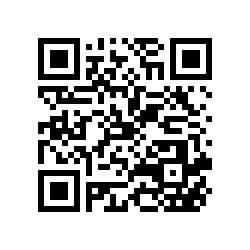Metode K-Nearest Neighbor Dan Naive Bayes Dalam Menentukan Status Gizi Balita
(1) Universitas Nasional, Jakarta, Indonesia
(2) Universitas Nasional, Jakarta, Indonesia
(3) Universitas Nasional, Jakarta, Indonesia
(*) Corresponding Author
Abstract
Full Text:
PDFReferences
A. Sholikah, R. Rustiana, A. Y. Prodi, K. Masyarakat, and I. Artikel, “Faktor-Faktor yang Berhubungan dengan Status Gizi Balita di Pedesaan dan Perkotaan,” 2017. [Online]. Available: http://journal.unnes.ac.id/sju/index.php/phpj
Kemenkes, “Hasil Studi Kasus Gizi Indonesia (SSGI)”,2021.[Online].Availaible: http://www.badankebijakan.kemkes.go.id/buku-saku-hasil-studi-status-gizi-indonesia-ssgi-tahun-2021/
M. Devi, “Analisis Faktor-Faktor Yang Berpengaruh Terhadap Status Gizi Balita Di Pedesaan,” 2010. [Online]. Available: http://www.
A. Jurnal et al., “Perbandingan Metode K-Nearest Neighbors dan Naïve Bayes Classifier Pada Klasifikasi Status Gizi Balita di Puskesmas Muara Jawa Kota Samarinda,” Adopsi Teknologi dan Sistem Informasi (ATASI), vol. 1, 2022, doi: 10.30872/atasi.v1i1.25.
[5] B. Yulia, L. Fahik, B. S. Djahi, N. D. Rumlaklak, and J. I. Komputer, “Data Mining Untuk Klasifikasi Status Gizi Desa Di Kabupaten Malaka Menggunakan Metode K-Nearest Neighbor,” J-ICON, vol. 6, no. 1, pp. 1–7, 2018.
N. Epriliana, A. Putri, D. Syauqy, and M. H. Hanafi, “Sistem Klasifikasi Status Gizi Bayi dengan Metode K-Nearest Neighbor Berbasis Sistem Embedded,” 2017. [Online]. Available: http://j-ptiik.ub.ac.id
M. Y. Titimeidara dan W. Hadikurniawati, “Monica Yoshe Titimeidara Implementasi Metode Naive Bayes Implementasi Metode Naive Bayes Classifier Untuk Klasifikasi Status Gizi Stunting Pada Balita.”
D. Simanjuntak dan A. Sindar, “Sistem Pakar Deteksi Gizi Buruk Balita Dengan Metode Naïve Bayes Classifier,” Online, 2019.
DOI: https://doi.org/10.30645/brahmana.v4i2.197
DOI (PDF): https://doi.org/10.30645/brahmana.v4i2.197.g196
Refbacks
- There are currently no refbacks.
Published Papers Indexed/Abstracted By:















